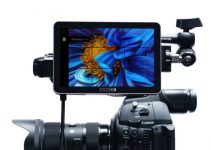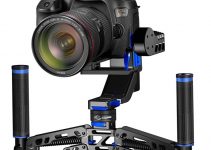There have been various new mounts hitting the market in the last few years, the latter being the EOS R and Sigma L. These formats are born with compatibility in mind, they try to push forward for innovation, and that’s good. But at the same time, we must not forget that there’s already an established mount system that has many of the features many video shooters are still looking for, and that is the Micro 4/3.
Common to quite a few cameras these days (like the Panasonic GH5, BMPCC 4K, and Z CAM E2), the system has its drawbacks, like the small sensor size, but it has a lot of strengths too. It allows for smaller and lighter lenses, plus it’s easily adaptable to other formats. All in all, you can pick among many options, and today renowned filmmaker and gear expert Tom Antos has chosen four special cine lenses that you may want to consider for your next shoot.
The offerings selected here are a nice pack: we have two spherical and two anamorphic lenses. A weird fisheye and a cine zoom… It’s indeed a heterogeneous group, but let’s tackle them one by one, beginning with the smallest unit.
Laowa 4mm f2.8 (Fisheye) (B&H, Amazon)
It’s so small that it seems like a toy. The secret behind such a small size is that this lens has a crazy focal length of 4mm. Unbelievable, right? It grants such an extreme fisheye field of view that you’ll actually have very few occasions to use it, but in those rear moments, there’s not going to be a single lens able to match it.
The width of the field of view is so ample that when shooting handheld, you’ll get your hands and feet in the frame. Cropping the image circle taking advantage of a smaller sensor helps, but you still have to keep in mind that being a fisheye, this lens distorts as crazy. It’s a specialty lens, and as such the whole purpose is to sit quietly in your gear bag, ready to pop up that one time you’ll need it. And it will be perfect.
Sirui 50mm f1.8 (1.33x Anamorphic) (Sirui)
Anamorphic has been for a long time the seal of the pros, especially for those working in “real” cinema, not small indie productions. That’s why almost 60 years after Lawrence of Arabia these visual aesthetics are still so strongly associated with cinema. This particular piece of glass is great because it lacks so many of the quirks of usual anamorphic lenses.
It’s sharp and does not have those small distortions and aberrations of non-spherical glass. The famous horizontal flares and oval bokeh are there with no doubt. Overall, it’s a wonderful lens and a cheap one too which makes it a nice addition to any filmmaker’s gear bag.
DZOFILM 20-70 T2.9 (Cine zoom) (B&H)
A tank. That’s the first impression you get from this lens. It’s sturdy, heavy and well built. It has all the rings ready for your follow focus. It is a parfocal lens, meaning once you’ve focused, you can change the focal length but the focus will stay sharp.
You’ll get the kind of details that define a lens as video or cine, instead of being a lens made for still photos and then turned to video. Another feature that goes that way is the de-clicked aperture ring. That is a feature we do not see often but can be very useful when moving in scenes with a lot of different illuminations, and a smooth iris pull can make the difference and save the shot.
Vazen 40mm T2 (1.8x Anamorphic Lens) (B&H, Amazon)
If the previous lens was a tank, then this is an aircraft carrier. This lens is so heavy that is probably one of the biggest you can mount on an MFT camera while shooting handheld. It’s a true anamorphic lens with a squeeze factor of 1.8.
Unlike many other lenses, it’s pretty sharp. Even with the aperture fully open, the Vazen 40mm T2 produced exceptionally sharp images, a pretty uncommon feature for anamorphic lenses that are usually quite soft when fully open.
Sure, the price point sets it up in a whole different league compared to the previous lenses, but that does not make the investment less worth it. It’s a wonderful lens, and it could become the crown jewel of your gear bag.
There you go, those are some of the best lenses you could get if you own a Micro 4/3 camera, and we’re sure there are a lot of you out there. What do you think? Should other lens enter this list? Let us know in the comments!
[source: Tom Antos]
Disclaimer: As an Amazon Associate partner and participant in B&H and Adorama Affiliate programmes, we earn a small comission from each purchase made through the affiliate links listed above at no additional cost to you.




